


2019 is an anniversary year par excellence! We have already celebrated 50 years since our BAC 1-11 first flew back in January, swiftly followed by 50 years of Concorde in March. However, between those two important events in February, the anniversary of 50 years since the first flight of the Boeing 747 Jumbo jet passed by, Unlike the two British planes it is still in limited production.
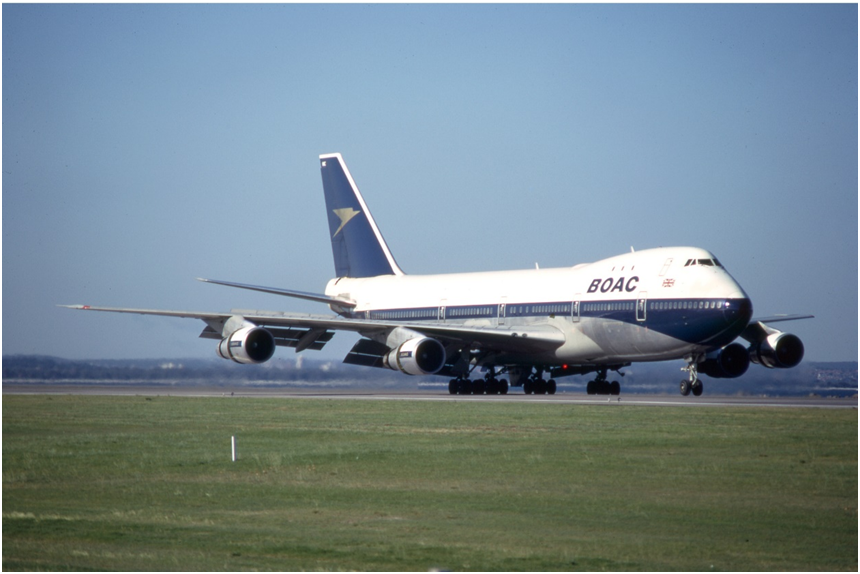
In June it will be 75 years since the D-day landings. IWM Duxford and Daks over Normandy are celebrating by hosting nearly 40 Douglas DC3/C47 Dakotas from around the world plus one licence-built Lisunov Li-2 from Hungary. In July we celebrate 70 years since the world’s first jet airliner, the Comet, first graced our skies. 2019 also marks 50 years since man first walked on the moon and 35 years since the Dove was delivered to the British Airliner Collection here at Duxford.
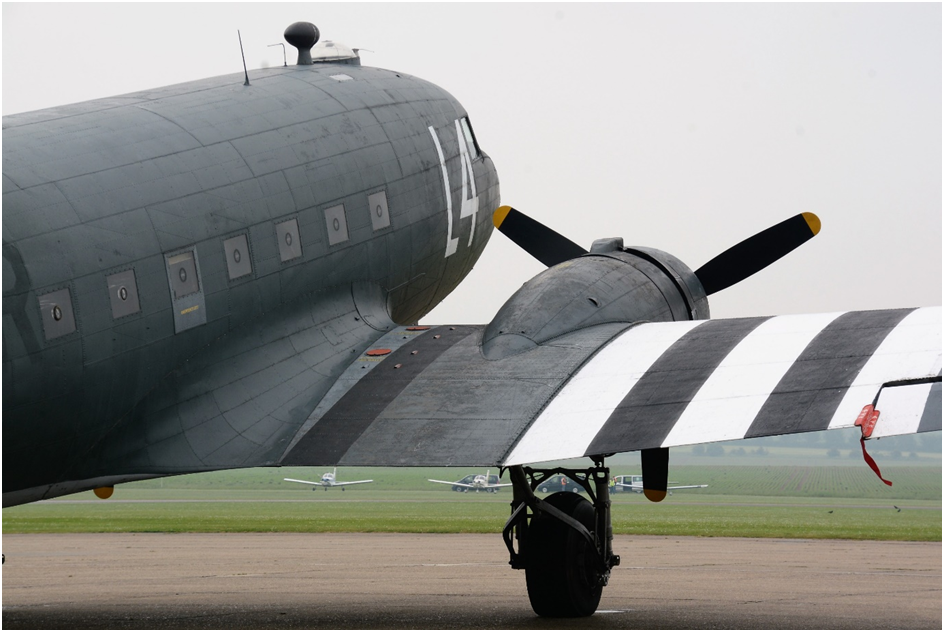
Another major celebration, and the main subject of this article, is the British Airways100 celebration marking a century of airline operations. I wonder where they got that catch phrase from? The Royal Air Force celebrated its centenary last year as RAF 100!
So how, I hear you say, can an airline that was formed in 1974 be 100 years old? Well it’s all down to the family tree and it goes something like this. British Airways came about in 1974 when BEA, Northeast, Cambrian, BEA divisions Channel and Scottish Airways all merged with BOAC to form the British Airways we know today.
But going further back in time BOAC was formed when the government of the day merged Imperial Airways with an airline called British Airways Ltd. Imperial itself was the result of a merger between Daimler Airlines and three other small operators. Daimler had previously having taken over Air Transport and Travel ( AT&T) who as the first airline in Britain started operations in 1919. Hence today’s British Airways can trace its origins back to 1919 and thus is 100 years old!
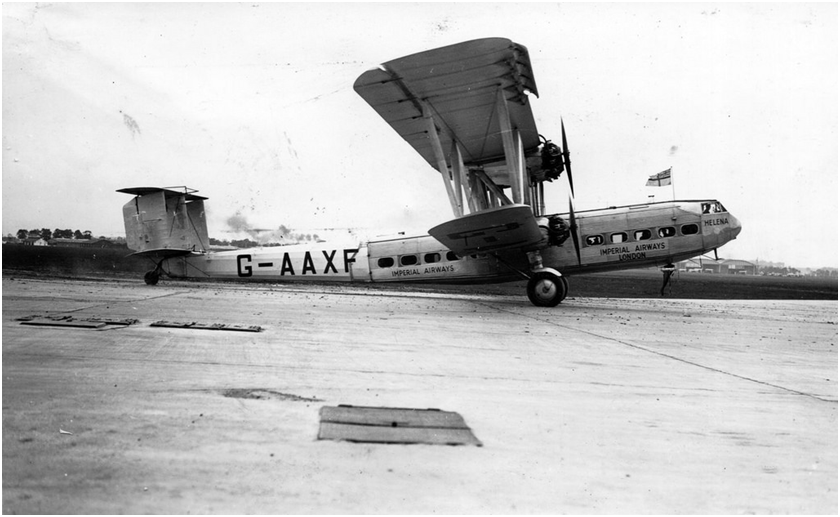
This October also sees 100 years of flying by another European airline, Koninklijke Luchvaart Maatschappij, or as it’s better known, KLM Royal Dutch Airlines. It also started flying in 1919 as KLM and have operated under that same name ever since.
I have covered the histories of Northeast and Cambrian before in Ramp Ramblings. This time around let’s take a look at BEA and the connection the British Airliner Collection has with the airline that was once known as ‘number one in Europe ‘.
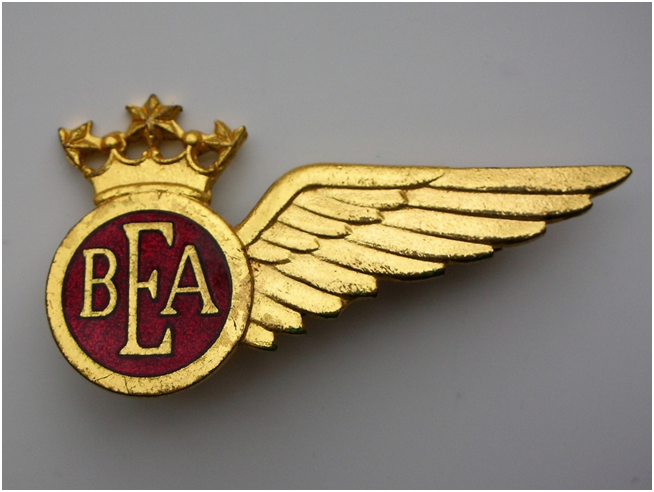
Formed by the government on 1 August 1946 as a state airline to operate domestic and European routes, British European Airways (BEA) started operations from the ex-wartime airfield of Northolt just to the west of London. It began flying by using a fleet of Vickers Viking airliners, a type that owed a lot in its design to the wartime Vickers Wellington bomber. The Vikings were supplemented by a large number of ex-wartime Douglas DC-3s. To boost its fleet numbers, BEA made the strange decision to obtain 11 German built Junkers Ju52 aircraft in 1947. They didn’t remain in the fleet very long. Whether public opinion had anything to do with it, so soon after the end of the war, is not recorded. But they were withdrawn later that year and all scrapped soon after!
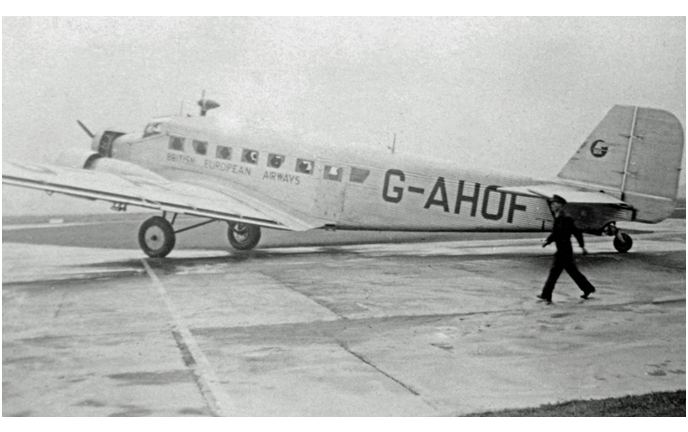
Business was good for the new airline and by October 1948 it carried its millionth passenger. In April 1950 the airline operated its first service from the new London Airport at Heathrow. It continued to operate from both airports until Northolt was closed to airline passengers in 1954. Not content with resting on its laurels, in 1950 the airline set up the world’s first commercial helicopter scheduled service when it operated a Sikorsky S51 between Cardiff and Liverpool. 1950 also saw the loan of the prototype Viscount when it flew the world’s first ever turboprop powered passenger service between Northolt and Paris. Following the success of this flight BEA placed an order with Vickers for 26 of its V701 Viscounts.
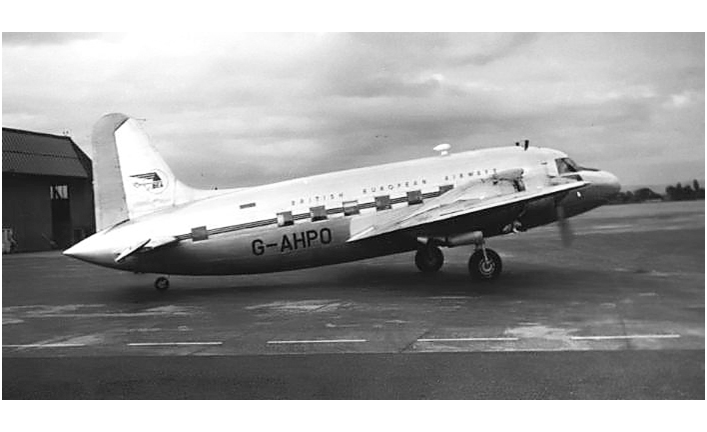
By this time the airline had expanded with a fleet of 97 aeroplanes with Vikings, DC-3s, de Havilland Rapides and helicopters in service. Throughout 1953 the airline took delivery of what would become its last large piston engine airliner, the Airspeed Ambassador. BEA named this fleet the Elizabethans in honour of Elizabeth II’s coronation. They were very popular with passengers and even when replaced by Viscounts Winston Churchill apparently insisted he flew by an Elizabethan rather than the new fangled Viscount!
Our Ambassador here at Duxford is the last one in the world and although displayed in the colours of its last operator, Dan Air, it was originally a BEA machine delivered to them in 1952. BEA was the only airline to order Ambassadors from new. They did however find willing buyers when the corporation sold them on. Our aeroplane went to the Jordanian Air force in 1959.
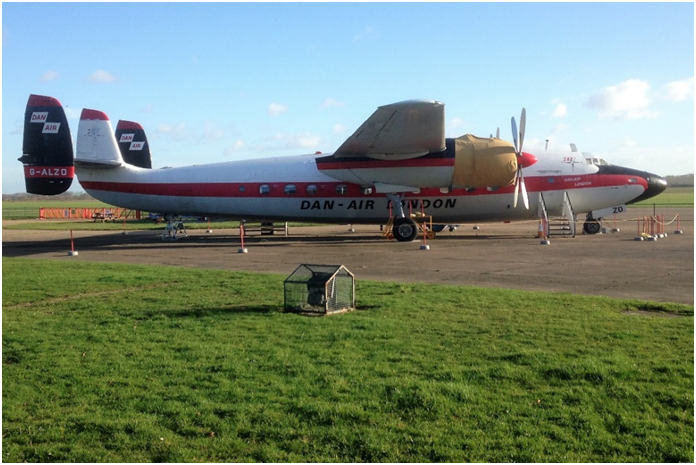
As well as the main routes out of London Airport, BEA operated a large network around Scotland using mainly a fleet of de Havilland Rapides. These small biplane airliners were also used on the Scilly Isles route and would continue that service until replaced by helicopters in the 1960s.
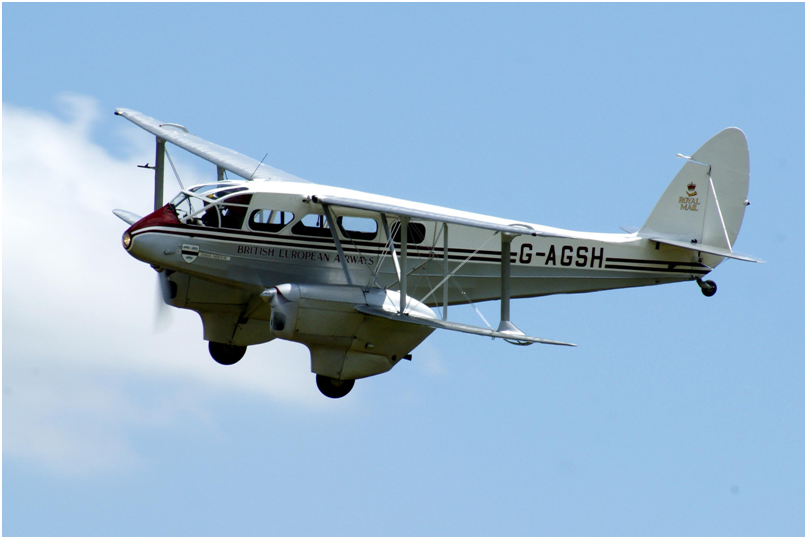
By early 1953 BEA had taken delivery of all 20 Ambassadors it had on order plus the first four of its new 33-strong Viscount fleet. The world’s first turbo prop airliner entered service on the London to Cyprus route in April. As these new aircraft arrived the DC3 and Rapide fleets were slowly reduced. By 1954, after eight loyal years, all the Vikings had been withdrawn. 1954 also saw the expansion of the helicopter services with routes from Southampton to London and London Airport to Battersea heliport being opened. All these changes helped the airline to carry 1,650,000 passengers over the 1953/54 period. In 1955 with the Rapides becoming somewhat long in the tooth BEA ordered two new de Havilland Herons to operate the Scottish services, also providing a Flying Doctor service to the isolated Hebrides islands. A third Heron was added to the fleet in 1956 but was written off on the island of Islay the following year. The other two soldiered on until 1973 until retirement at which time the air ambulance service was taken over by Loganair.
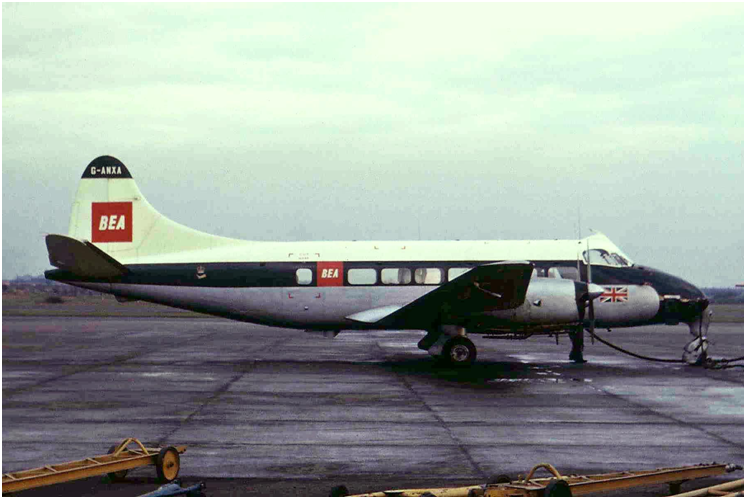
By the end of 1955 the airline held options on a further 56 Viscounts and 20 of the newer and larger Viscount replacement, the Vickers Vanguard, due for delivery in 1960. At the company’s ten-year anniversary in 1956 it was noted that their traffic had increased six-fold from when they started in 1946 and they were now carrying 2.25 million passengers a year. Over half the revenue was coming from the Viscount fleet which was slowly replacing the Ambassadors. The plan was to retire both these and the remaining DC-3s over the 1957/60 period.
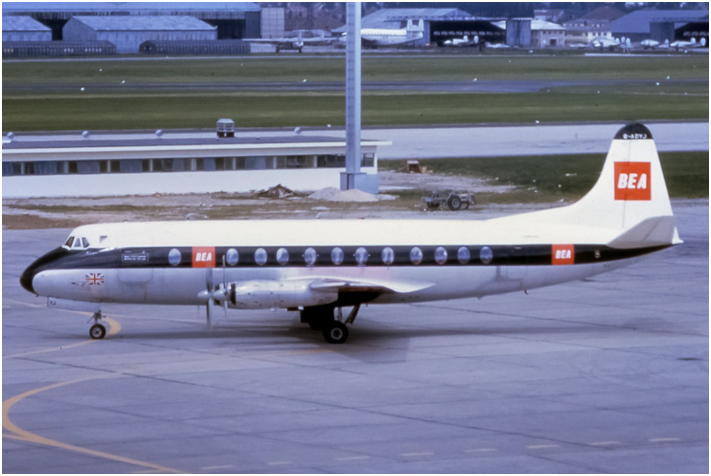
1957 would see an additional 24 new Viscount V802s join the fleet with another 16 of the larger Viscount V806s arriving the following year. BEA was becoming a major operator of the popular Vickers turboprop. The airline would eventually see 79 examples pass through its hands. Happy as the airline was with its Viscounts, it became apparent during the 1950s that jet equipment would be needed by the next decade and enquiries were made of the various aircraft manufacturers. In 1958 an order was placed with de Havilland for 24 DH121 Tridents. As a stop gap, the following year saw 14 Comet 4Bs ordered. We have a Comet in the British Airliner Collection but it is a long range Comet 4C built for BOAC. The Comet 4Bs did not have the iconic wing tanks fitted to the longer ranger versions.
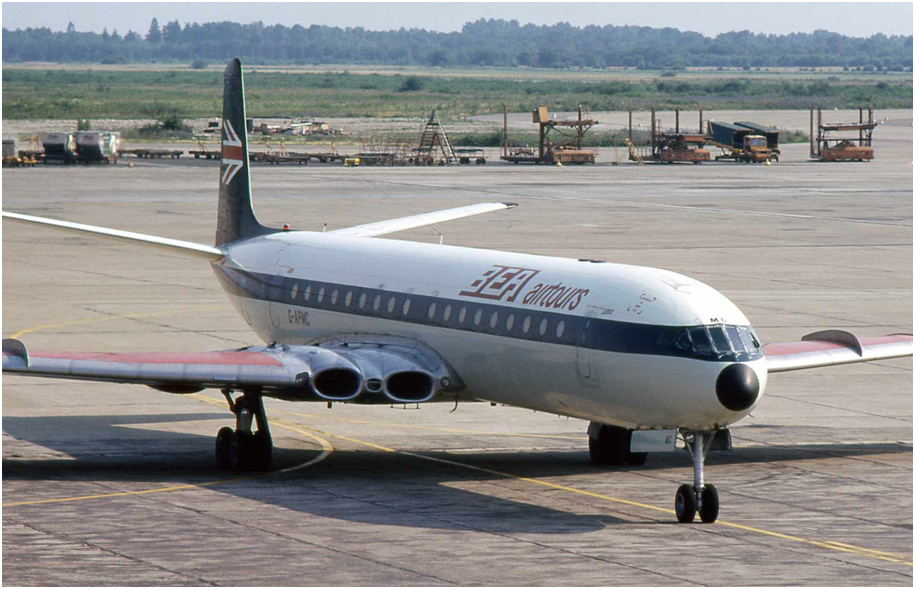
With the new Viscounts arriving, BEA operated its last Ambassador service in July 1958 which left the Viscounts, 34 DC-3s, two Herons, three Rapides and the helicopters to operate the large route network the airline now flew.
Early in 1961 the Vanguards had been delivered along with seven Comets which allowed the airline to offer jet services to 19 European cities. The DC-3 fleet was now down to just eight examples and these would be retired from the airline the following year. Contracts were agreed that saw three Heralds and three Argosy freighters being leased into the fleet, arriving in 1962. The Heralds were to be used up in Scotland replacing a number of DC-3s mainly on the Orkney and Shetland routes.
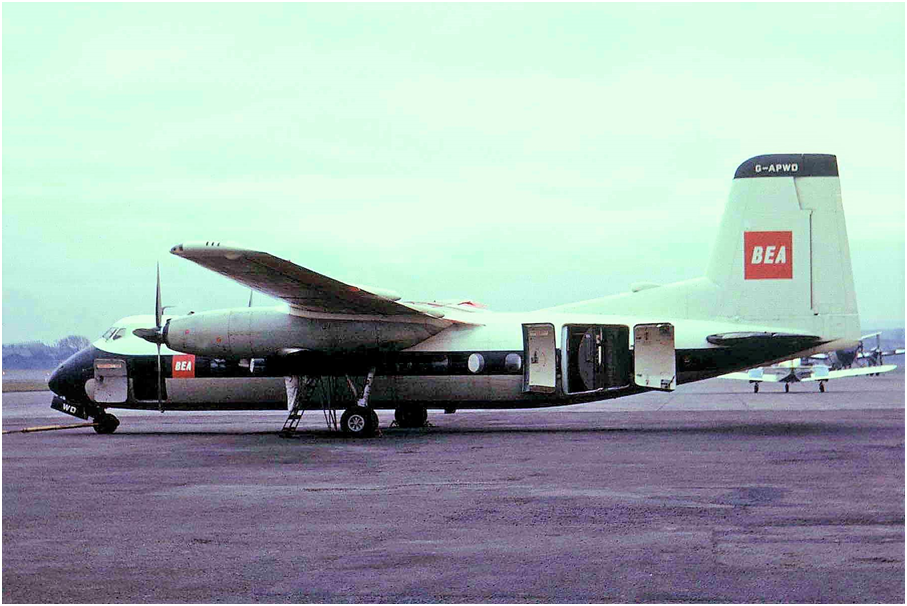
The Argosys were to offer a cargo-only service and were later joined and indeed replaced when BEA converted most of its Vanguards to Merchantman freighters. Along with the withdrawal of the DC-3s some of the early Viscounts were also withdrawn from operations as more Comets entered service and by 1964 Tridents, arrived to form the jet backbone of the fleet. The helicopter unit was also reformed in 1964 as a subsidiary called BEA Helicopters and they started helicopter services from Penzance to the Isles of Scilly. You can view a Herald at Duxford. Although this example was never operated by BEA, it is one of only four left in existence.
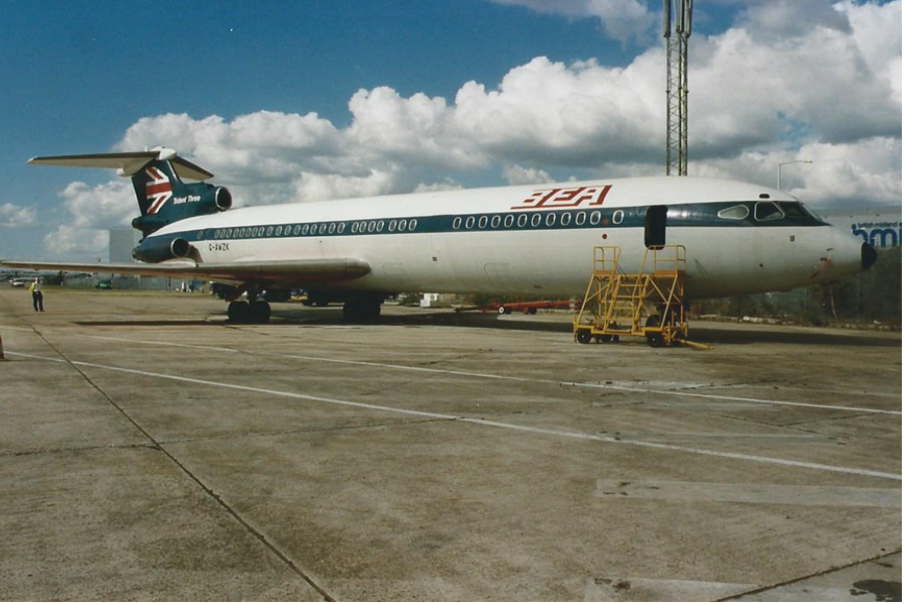
In June 1965 all the hard work by BEA, de Havilland and Smiths Industries paid off when the world’s first fully automatic landing of a passenger aircraft in scheduled airline service took place at Heathrow. The Trident One did not, however, have the range to fly non-stop to the more distant destinations on the BEA route map such as Moscow and Tel Aviv. BEA therefore ordered a number of the longer-range Trident Two aircraft for delivery in 1968. The airline eventually operated all three major variants of the Trident plus a number of the high seating density IEs operated by its subsidiary Northeast airlines. Northeast and Cambrian became wholly owned subsidiaries in 1967. It is a Trident Two, G-AVFB that is preserved here at Duxford. This year she underwent a repaint and now looks as good as new.
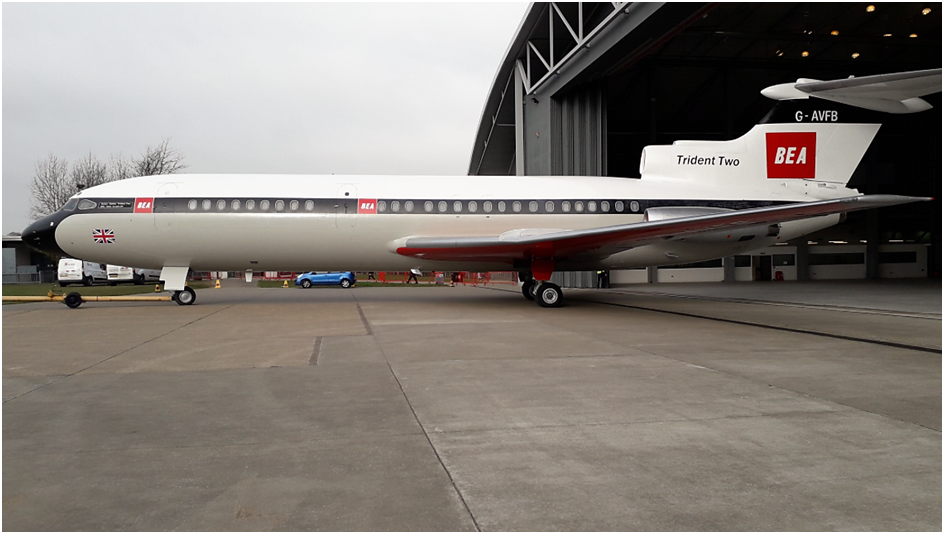
By 1968 it was clear more jets were needed and BEA ordered 26 of the longer fuselage Trident 3Bs and by the end of the year the first of a number of BAC 1-11s entered service mainly on the internal German Services. The first of the Trident 3Bs would arrive in 1971 the same year the remaining Comets were transferred to BEA Airtours which was set up at Gatwick to fly holiday charters.
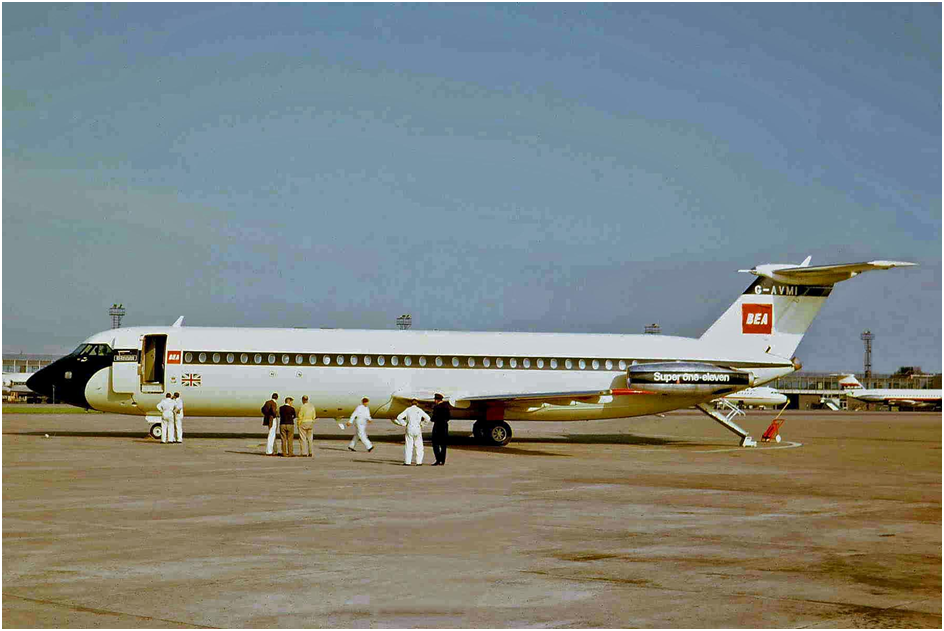
The airline was now looking to the future and considering a new wide-bodied aircraft. After much research the airline was keen on the BAC 3-11 a British wide-bodied proposal, however this needed government funding to proceed. When this was not forthcoming the project was cancelled and BEA was left with either the Airbus A300 or the Lockheed L1011 Tristar. A decision was made on the Tristar and six were ordered in 1972. This aircraft was planned by BEA to be the first wide-bodied jets in Europe but although the airline placed the order the aircraft were not delivered until after the merger with BOAC and the formation of British Airways, so sadly the Tristars never wore BEA colours.
It was left to the Tridents, BAC 1-11s, Viscounts and a few Vanguards to carry BEA up to the merger with BOAC to form British Airways on 31 March 1974.
Here at Duxford we have an example of several of the types used by BEA: Ambassador, Viscount, Herald, Comet, Trident and BAC 1-11 why not come and see for yourself what BEA ‘Number one in Europe’ used to offer its passengers?
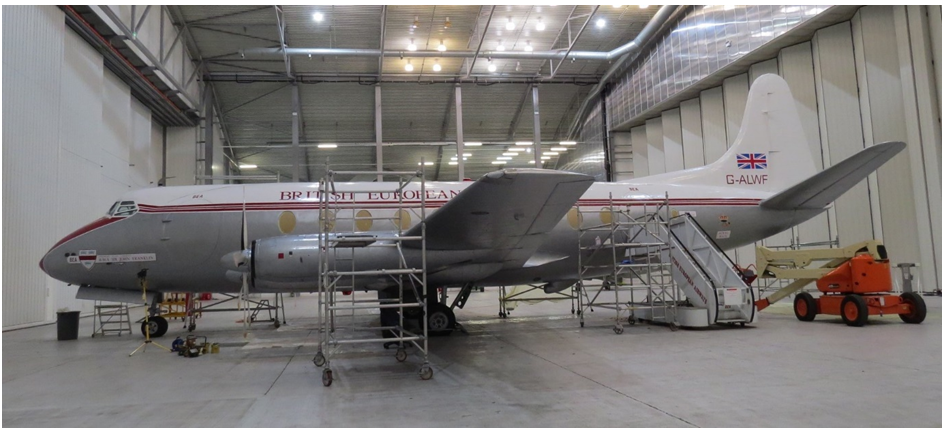
Another time we will look at the other side of the partnership, BOAC. We have several ex-BOAC aeroplanes in our collection here at Duxford. So happy 100th birthday British Airways!
Till the next time Keith
Registered Charity No. 285809